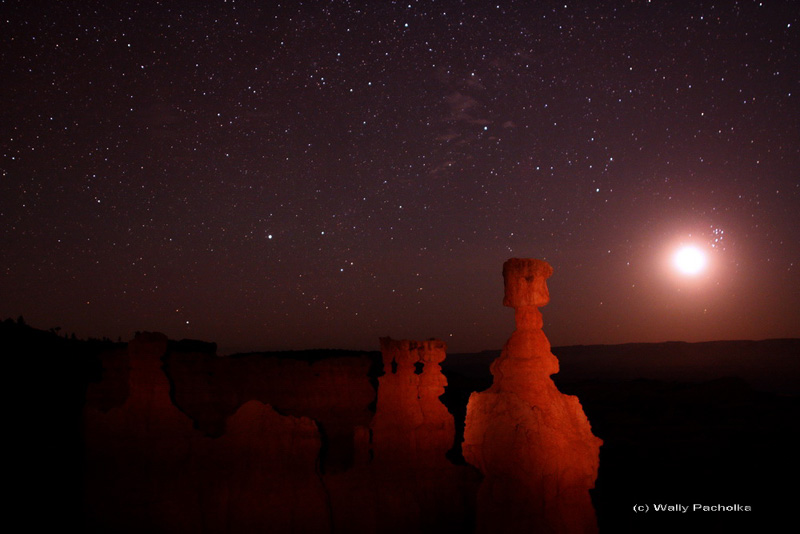Explanation: The strange-looking rock formations in the foreground of this skyscape are called hoodoos. Towers of weathered, eroded sedimentary rock, hoodoos are found in arid regions of planet Earth and are particularly abundant in an area known as Bryce Canyon National Park in southern Utah, USA. The more familiar night sky pictured here was recorded early Monday morning and includes bright star Capella, alpha star of the constellation Auriga, left of center. On the far right, a very over exposed crescent Moon dominates the sky in close conjunction with the sister stars of the Pleiades cluster. The curious shapes of the two tall, illuminated hoodoos suggest their popular monikers; Thor's Hammer (right) and The Temple of Osiris.
1999 2000 2001 2002 2003 2004 2005 2006 2007 2008 2009 2010 2011 2012 2013 2014 2015 2016 2017 2018 2019 2020 2021 2022 2023 2024 2025 |
Yanvar' Fevral' Mart Aprel' Mai Iyun' Iyul' Avgust Sentyabr' Oktyabr' Noyabr' Dekabr' |
NASA Web Site Statements, Warnings, and Disclaimers
NASA Official: Jay Norris. Specific rights apply.
A service of: LHEA at NASA / GSFC
& Michigan Tech. U.
|
Publikacii s klyuchevymi slovami:
pleiades - lyubitel'skaya astronomiya - gora
Publikacii so slovami: pleiades - lyubitel'skaya astronomiya - gora | |
Sm. takzhe:
Vse publikacii na tu zhe temu >> | |
